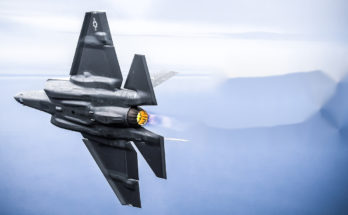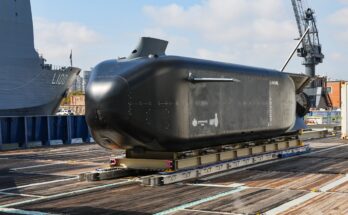by C. Zachary Hofer, Electronic Systems Analyst, Forecast International.
 The announcement of the successful manufacture of a viable non-mechanical, phased-array, electro-optical microchip as part of DARPA’s SWEEPER program is a landmark event. While phased-array technology has been available in radar (radio detection and ranging) devices for years, this is the first time that there has been a wide announcement of an electro-optic device (in this case, laser detecting and ranging, or LIDAR) demonstrating this ability on board an integrated microchip.
The announcement of the successful manufacture of a viable non-mechanical, phased-array, electro-optical microchip as part of DARPA’s SWEEPER program is a landmark event. While phased-array technology has been available in radar (radio detection and ranging) devices for years, this is the first time that there has been a wide announcement of an electro-optic device (in this case, laser detecting and ranging, or LIDAR) demonstrating this ability on board an integrated microchip.
To illustrate the massive gains of phased-array EO technology, the Short-range Wide-field-of-view Extremely agile Electronically steered Photonic EmitteR, or SWEEPER – which is an early prototype – is capable of scanning back and forth at 100,000 times per second. In comparison, a current gimbal-mounted state-of-the-art system is approximately one ten-thousandth as fast at only 10 times per second. The accomplishment is all the more noteworthy in that SWEEPER can steer its laser in a 51° arc, which DARPA (Defense Advanced Research Projects Agency) says is the largest of any ever achieved by a chip-scale optical scanning system.
By being able to integrate an EO system on a microchip, DARPA’s new technology allows manufacturers to achieve new levels of miniaturization. The process utilizes techniques refined in semiconductor manufacturing, allowing mass production at a faster rate and at a much lower cost than having to procure a gimbal with every mechanically scanned EO device. Additionally, SWEEPER technology is less affected by the calibration issues of mechanically scanned systems, where changes in temperature or minor impacts can affect proper operation.
Four teams of DARPA-funded researchers, hailing from the Massachusetts Institute of Technology; the University of California, Santa Barbara; the University of California, Berkeley; and HRL Laboratories, have now successfully demonstrated the semiconductor manufacturing technique for electro-optical phased- array technology. In the coming years, SWEEPER technology will be developed further through DARPA’s Electronic-Photonic Heterogeneous Integration (E-PHI) program. The E-PHI program’s progress to date includes the successful integration of billions of light-emitting dots on silicon.
For 50 years, Forecast International intelligence reports have been the aerospace and defense industry standard for accurate research, analysis, and projections. Our experienced analysts compile, evaluate, and present accurate data for decision makers. FI's market research reports offer concise analysis of individual programs and identify market opportunities. Each report includes a program overview, detailed statistics, recent developments and a competitive analysis, culminating in production forecasts spanning 10 or 15 years. Let our market intelligence reports be a key part of reducing uncertainties and mastering your specific market and its growth potential. Find out more at www.forecastinternational.com



